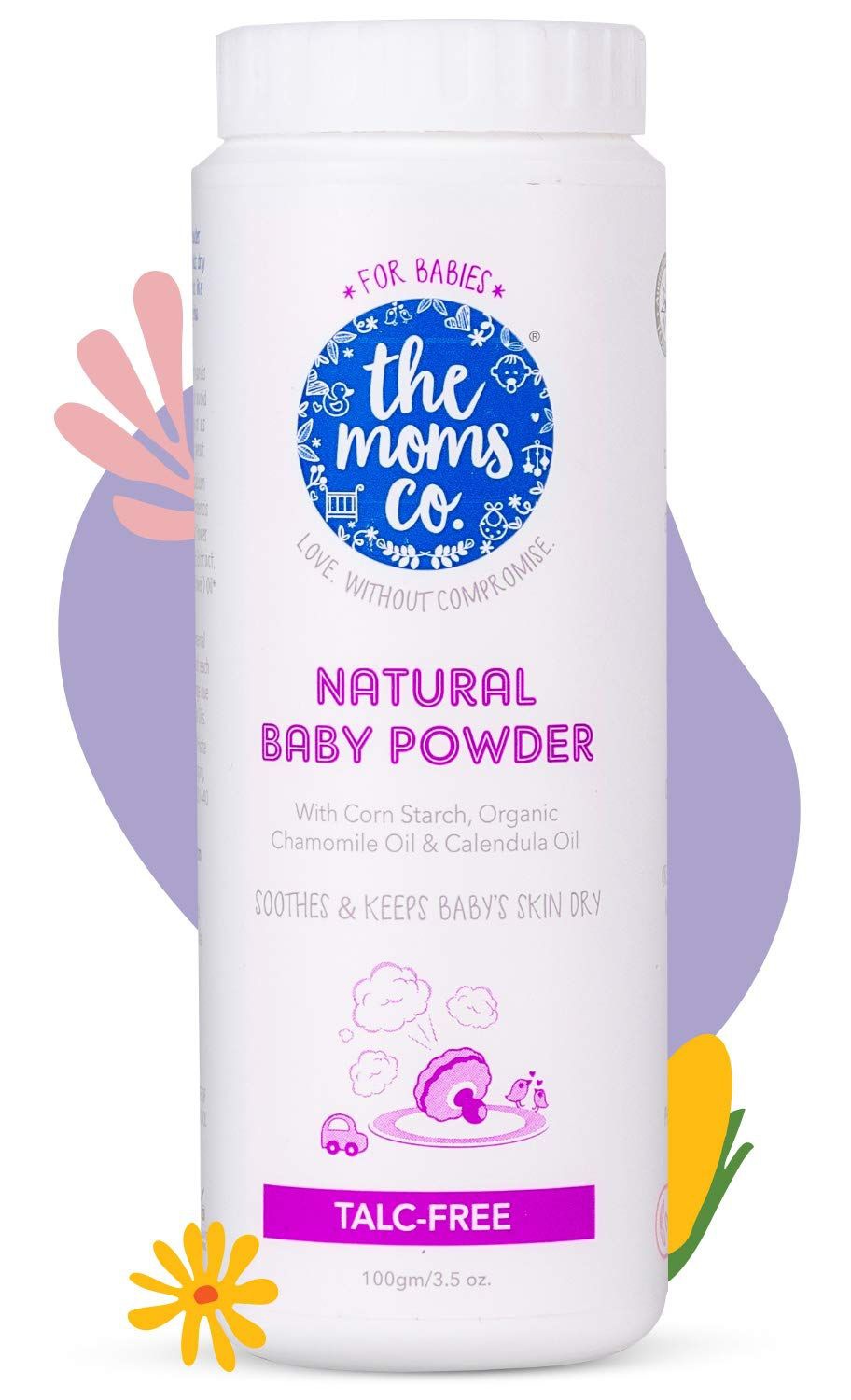
Talc-Free Natural Baby Powder
Highlights
Skim through
| Ingredient name | what-it-does | irr., com. | ID-Rating |
|---|---|---|---|
| Calendula Oil | perfuming | ||
| Corn Starch | viscosity controlling, abrasive/scrub | ||
| Organic Chamomile Oil | soothing | goodie | |
| Organic Jojoba Oil | emollient | 0, 0-2 | goodie |
| Tocopherol | antioxidant | 0-3, 0-3 | goodie |
| Tricalcium Phosphate | abrasive/scrub | ||
| Vanilla Extract | perfuming |
The Mom's Co. Talc-Free Natural Baby PowderIngredients explained

A corn-derived, white to yellowish, floury powder that works as a handy helper ingredient to create nice feeling emulsions.
It gives a generally pleasant skin feel, has some mattifying effect (though rice starch is better at that), it reduces greasiness and tackiness and helps the formula to spread easily without whitening or shininess.
The essential oil coming from the German Chamomile. It's loaded with the famous anti-inflammatory agent, bisabolol (approx. 50%) and contains 5% of soothing, antiallergic and blue color giving chamazulene. It also contains about 120 other things, including 28 terpenoids and 36 flavonoids (including some antioxidants like quercetin).
As for skincare, the essential oil is used mainly for it's anti-inflammatory and soothing properties.
Jojoba is a drought resistant evergreen shrub native to South-western North America. It's known and grown for jojoba oil, the golden yellow liquid coming from the seeds (about 50% of the weight of the seeds will be oil).
At first glance, it seems like your average emollient plant oil: it looks like an oil and it's nourishing and moisturizing to the skin but if we dig a bit deeper, it turns out that jojoba oil is really special and unique: technically - or rather chemically - it's not an oil but a wax ester (and calling it an oil is kind of sloppy).
- Primary fat-soluble antioxidant in our skin
- Significant photoprotection against UVB rays
- Vit C + Vit E work in synergy and provide great photoprotection
- Has emollient properties
- Easy to formulate, stable and relatively inexpensive


You may also want to take a look at...
| what‑it‑does | perfuming |
| what‑it‑does | viscosity controlling | abrasive/scrub |
| what‑it‑does | soothing |
| what‑it‑does | emollient |
| irritancy, com. | 0, 0-2 |
| what‑it‑does | antioxidant |
| irritancy, com. | 0-3, 0-3 |
| what‑it‑does | abrasive/scrub |
| what‑it‑does | perfuming |





